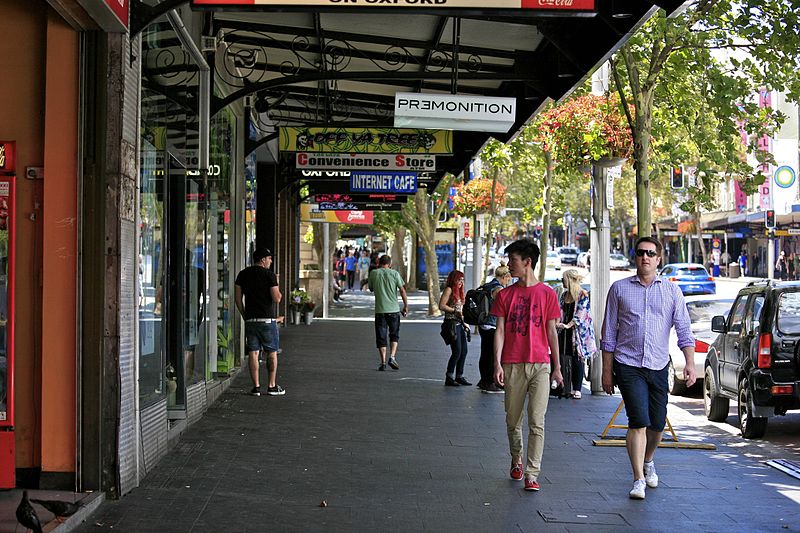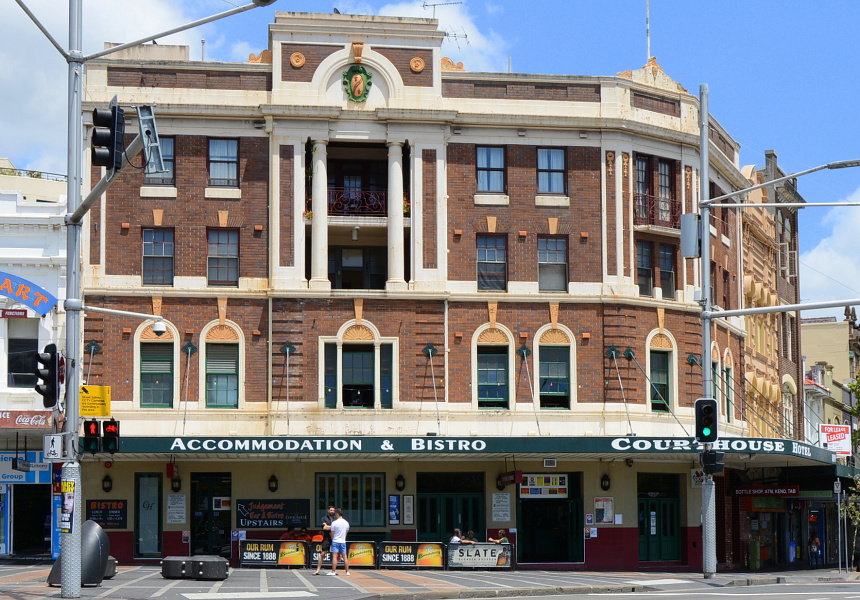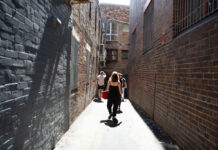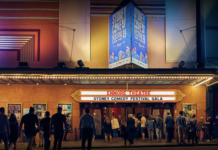With a number of new developments announced recently for Oxford Street, is it time to hail the revival of the famous strip? I hope so, but I have my doubts.
Walking along Oxford Street is to be reminded of lost icons from Sydney’s nightlife and culture.
The Balkan Grill has gone, the Albury Hotel has long since been apartments, and the Grand Pacific Blue Room is shuttered after a brief sojourn as Don Pepinos. Whoever remembers the Freezer which turned into the Hip Hop Club?
From the Verona Cinema walking towards Taylor Square almost 20 of the shops are either closed or for lease.
Sad to think that those art students from COFA have no local watering hole, with the Arts Bar closed up, and while the Beecham Hotel is under renovation surely it re-opens in a tough market. Where are the punters going to come from?
It’s crazy to think that this desolate row is only kilometres from some of the priciest real estate in Australia.
It is Sydney’s loss that Oxford Street has been like this for a long time, even before COVID came along and emptied the streets.
A number of new developments have been announced, however, which will change the street and – hopefully – bring back some life.

The gay community used to own the street, but the community is spread around Sydney these days, not concentrated on either side of Oxford Street. Gay businesses have a big part to play in Oxford’s Street’s future, as it is a historic homeland, but they need some help.
Maybe there are signs of life there already. After all, Freda’s made a name for themselves and helped turn Chippendale into a go-to area, and now they are trying a café on the corner of Oxford and Flinders Street with Al Fresco dining. Strange to say, but if they can bring a little bit of that Chippendale vibe with them, Oxford Street will be greatly improved.
Just up from Freda’s, at the old Grand Pacific Blue Room site, there are plans to transform it into a hotel by the end of 2022. Global hotels group Accor has joined forces with property group Boston Global to create a new hotel branded 25hours, a chain which is already established in Europe and the Middle East.
At Taylor Square, private equity firm Moelis has purchased Kinsellas and the Courthouse for $67 million, with plans to merge the two into a large pub complex with accommodation and rooftop bars.

Then there is the biggest development of the three, AsheMorgan and TOGA Group have $200 million plans for a 70 room hotel and commercial office space on the opposite side of the street, at a development to be called the Darlinghurst Collection.
Watching all this unfold is Steph Gyory, the head of the Darlinghurst Business Partnership who runs the Record Store in Oxford Street.
He is supportive of the new developments, but also has his caveats.
“The TOGA development, for example, will have an impact but the question is what is going to be left afterwards,” he says.
“That block is going to be empty for however long it takes, and how many tenants are going to come back?
“So it’s up to the developer to curate that space and bring in businesses and show some sensitivity and intelligence.”
Gyory is supportive of commercial use rather than residential, and also supports taller height limits for new developments because more space means more people in the area.
Unfortunately, he says, TOGA were hamstrung by current restrictions, and a City of Sydney planning review needs to be completed before rules can change.
Another problem is the street itself. The State Government transformed Oxford street into a “six lane arterial road” which at one point become seven lanes. Oxford Street, says Gyory, was never that wide.
Then there are institutions which are buying up property in the area and completing new developments, which displace smaller businesses and give little back to the street. Its not Oxford Street, but one example is the purchase of the Green Park Hotel by St Vincent’s Hospital.
“So I think the institutions have something to answer for, and the Government for building that massive road,” says Gyory.
Anoother problem facing revitalisation is that landlords for the vacant shops often have little incentive to lease them. Many Oxford Street landlords are “old money” and there’s little imperative for them to lease out their buildings today, when they are thinking in terms of business cycles spanning decades.
The solution, says Gyory, lies in a “complete precinct” plan which curates the area with an integrated and cohesive vision. The trouble is that no one organisation – from the State Government to the City of Sydney – is taking responsibility and community groups, such as the Darlinghurst Business Partnership, have neither the resources or power to do so.
And so, we wait and hope for Oxford Street to spring back to life, almost by magic. Hundreds of millions of dollars thrown at the street in development sounds great, but will it revive the patient?
Watch this space and this street, and hope for new icons coming soon.
























